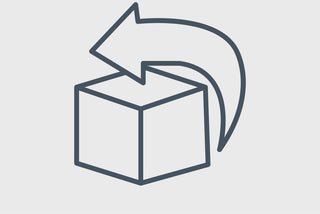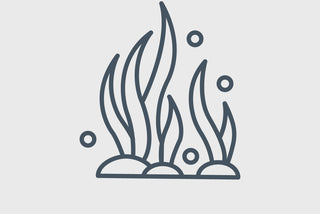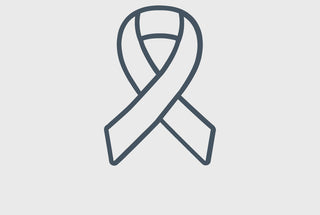By Dan Fryda
Whenever I travel to give lectures on the healing properties of the ocean and most notably seaweed, I am usually confronted by spa and massage therapists with questions over allergies to iodine (which is found prominently in seaweed). In fact the fear of iodine is so pervasive that most spas will not perform a seaweed service on anyone who claims to be allergic to iodine.
I had been perplexed by this unwarranted fear of iodine which is so vital to our health and well-being. Then I came across the studies conducted by a group calling themselves The Iodine Project headed Dr. Guy Abraham of UCLA. What I learned was eye-opening at the least.
With the use of radio-active iodine as a contrast in radiology, there were indeed some allergic reactions. This led to the elimination of iodine in the baking of bread. The iodine was replaced with bromide which is a harmful chemical used in fertilizers and hot tubs. In all iodine consumption was reduced by 50% over the last 40 years.
RDA = Really Dumb Advice
Now iodine is vital to women’s health. When learning about the role of iodine, we are taught that it is responsible for the health of the thyroid. Deficiencies in iodine leads to goiter and in some cases mental retardation. The RDA needed to prevent goiter is approximately 160 IUs of iodine daily. However, that is the minimum amount to prevent goiter but ignores iodine’s other roles equally important.
To understand this consider that iodine is required for the healthy functioning of the reproductive organs—breast tissue, uterus and ovaries. It is equally important for the health and moisture-locking abilities of your skin. Here is a breakdown (according to Dr. Abraham) of where iodine goes in the body.
Thyroid3%Breast Tissue9%Uterus/ovaries9%Skin20%Muscle Tissue & Misc.59%
Therefore 160 IUs doesn’t cut it. By contrast, the Japanese health agencies consider the RDA for their population to be 10,000 IUs! This is about 70 times greater than the U.S. figure. It is worth noting that the Japanese consume that amount daily in their diet consisting largely of seaweed dishes. However according to research conducted by Drs. ______ and Flechas, 95% of all Americans have an iodine deficiency.
Research provided by the Iodine Project suggests that breast cancer and uterine cancer are iodine deficiency diseases. Iodine is vital in women’s reproductive health. With cancer rates almost 10 times greater in the U.S. than in Japan. One symptom of iodine deficiency is chronically dry skin.
The causes are varied for this syndrome. First we can point to the gradual elimination of iodine in bakery products. However, the bromide used to replace iodine is in fact an iodine inhibitor. There are three such inhibitors that most Americans come into contact with. These are bromide, chlorine and fluoride. Here is how they inhibit your daily requirement of iodine.
No Parking for Iodine
Each cell in the reproductive organs and skin has what is termed as “iodine receptors.” That means that molecules of iodine fit into the spaces allocated by those cells. The problem arises when your diet has excess bromides or other halogens such as chlorine and fluoride. Swimming in a chlorinated pool exposes you to this toxic element as does taking many medications such as anti-depressants which overload the system with fluoride. When these halogens circulate throughout the bloodstream, they fit into the iodine receptor spaces normally reserved for iodine. In effect there is no parking available for iodine. What to do?
One remedy is to increase your diet with iodine rich seaweeds—the richest source of iodine available. The problem is that most Americans do not have seaweed available. For those who don’t eat sushi on a daily basis, there is another way to get your daily requirement of iodine. And that is via topical application of seaweed or bathing in seaweed.
Iodine is a trace element. Its molecular size is infinitesimally small. As such, iodine along with other minerals and trace elements are able to penetrate through to skin and enter the bloodstream. This is based on research by the University of Rennes in France that suggests that bathing in a warm (body temperature) bath allows for penetration of these vital nutrients. You are feeding your body transdermally.
This is both good and bad. Bathing in seaweed is a relaxing way to obtain minerals such as calcium and magnesium as well as iodine. However, swimming in most pools or bathing in a hot tub exposes you to chlorine and bromide—this is a bad thing. So my advice is to bathe in seaweed at home. We have had much success with spas such as Gurney’s Inn in Montauk where they offer seawater and seaweed baths. If a spa is not available, we have provided seaweed bath powders for use at home.
The best way to enjoy a seaweed bath that is both relaxing and nourishing is to prepare a warm bath ranging from 98 to 100 degrees. Add powder to running water and add a relaxing aromatherapy oil. Finish with a mineral rich body lotion to lock in the nutrients. For an added benefit, light a candle and soak for 20 minutes. You will be refreshed and on the road to health. I can think of no better way to celebrate Breast Cancer Awareness.






